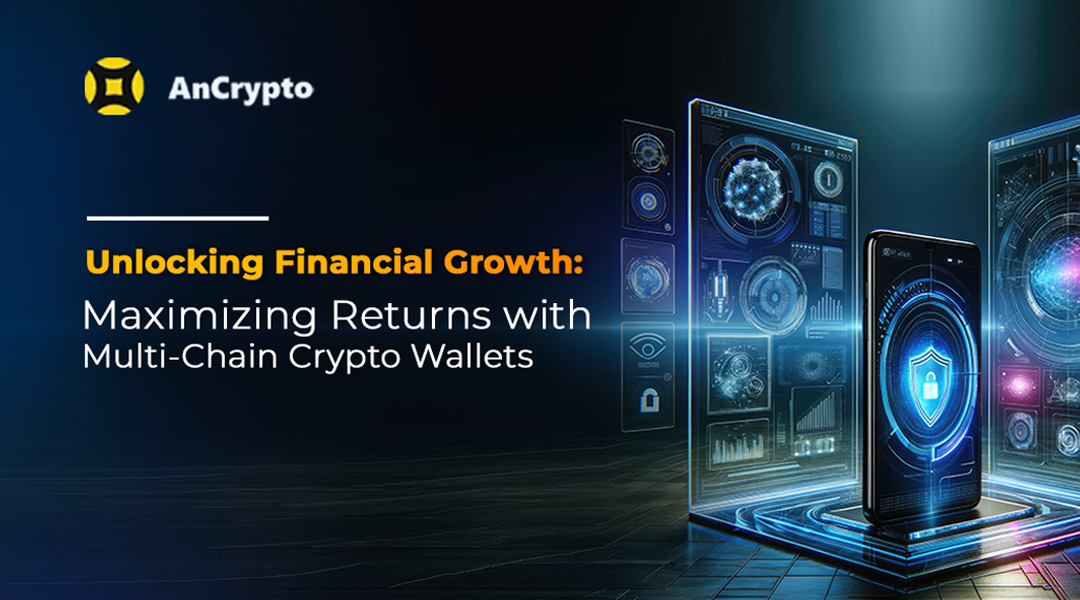Cryptocurrencies have been here for a while now. And decentralized wallets are hailed as the driving force behind fast and easy crypto transactions. However, despite their growing popularity, DeFi wallets are terribly misunderstood in some aspects.
While, on one hand, the decentralized financial systems are favoured because of their non-intermediated and low-cost transactions, on the other hand, the people are skeptical of its high energy requirements and price fluctuations. As more and more people consider DeFi trading, it’s important to examine the common misbeliefs surrounding it and uncover the truth about cryptocurrency.
Myth 1: Crypto trading is unlawful
The very first question that comes to a novice’s mind is: “Is crypto trading illegal?” This is neither completely false nor entirely true, yet among the most prevalent cryptocurrency myths and realities. The fact is that crypto trading and related transfers are banned in certain countries like China and Turkey, the big wigs like UK, US, and the EU have given it legal status. Besides, several countries like India are anticipated to devise a whole framework for cryptocurrency transactions. Experts speculate that the developing nations are set to benefit from and embrace crypto trade the most, because of its inherent decentralized and inflation-resistant nature.
Myth 2: Cryptocurrencies have no real-world value
The value of any asset is determined by its supply and demand. Yet, sometimes people base it on the lack of its tangible or physical equivalent. Cryptocurrencies will retain value until people continue buying, selling, and exchanging them. And as the remaining countries assign a legal status to these digital currencies, the stage is set for its widespread e-commerce acceptance.
Myth 3: Decentralized wallets are not secure
The newbie crypto investors often wonder whether DeFi wallets are vulnerable to hacks and how safe is cryptocurrency? In fact, crypto transactions are more secure than conventional financial ones, especially when done on exchanges or platforms that adhere to best practices for security and privacy. Though no ecosystem is fully immune to security breaches, most of the major cryptocurrency platforms and DeFi wallets utilize robust security controls, that go beyond the encryption of digital wallet key encryption and multi-factor authentication. It is worth noting that the Bitcoin network hasn’t been attacked since its inception in 2009. Another aspect that prevents vulnerabilities in crypto networks is the involvement of smart contracts, which makes it very difficult to steal tokens and other assets.

Myth 4: DeFi wallets are only used for illegal transactions
Although the idea of anonymity and lack of regulation in cryptocurrencies is supposed to entice criminals, these have caused no such spike in criminal activities or financial crime. Things like money laundering, bribery, underground markets, and corruption have been happening with fiat currencies for ages. So, similar to fiat money, cryptocurrencies can be used for both legal and illegal transactions via DeFi wallets and other such means.
Myth 5: DeFi transactions are not traceable or recoverable
Despite the anonymity of cryptocurrency and associated transactions, these can be traced by digital forensic experts. Certain sophisticated software tools and protocols are used to review, identify, and analyze the originator and recipient of transaction activity. In part, this is made possible by blockchain technology that holds the records of such transactions. So, while the DeFi system offers privacy, it can be tracked down in case of high-profile urgencies.
Myth 6: Crypto Trading is a sort of gambling
One major reason behind this assumption is the price volatility of cryptocurrencies. Yet, people tend to overlook the fact that over time, the national currencies have shown a declining graph in terms of value and purchasing power, whereas the value of cryptocurrencies tends to rise over a long period of time. For instance, bitcoin has more or less consistently shown an increasing trend since 2010.
Myth 7: Cryptocurrencies, Digital assets, and Blockchain are interchangeable terms
Many people perceive cryptocurrencies, digital assets, and blockchain as the same thing. While all of these are co-related and interdependent, yet are completely different concepts and things. Blockchain is basically the technology that facilitates crypto transactions. It is visualised as a distributed ledger, made up of blocks linked by cryptographic functions. Cryptocurrency is a sort of electronic money that can be exchanged, transmitted, and received through a blockchain and secured by encryption. Finally, ‘digital asset’ is a broader term that includes all types of valuables and entities that exist in electronic forms, such as cryptocurrencies, NFTs, DAOs, etc.
Myth 8: DeFi cannot compete with traditional financial systems
The rising popularity and espousal of DeFi are proof that it poses a challenge to existing conventional financial systems. To bring transparency, efficiency, and cost savings in transactions, several organizations have adapted to the crypto space. No doubt, it is a task for the governments to let go of the fiat currency system, DeFi can emerge as a worthy ally to complement traditional finance.
Myth 9: DeFi is a hoax
Unlike traditional web browsers, DApps are on decentralized peer-to-peer networks and require no central point of authority or control. The purpose here is to enable users to interact with all blockchains instead of using a third-party processor between them. As the DApp browser functions and hosting are decentralized, they cannot be regulated or censored, so DApps have been touted as an escape from government censorship or central authority.
Myth 10: Crypto Transactions are harmful to the environment
It is true that cryptocurrency mining requires energy, yet its environmental impact depends upon the type of energy source. A recent study in New York reveals that “Bitcoin is far more energy-efficient than traditional banking and gold mining”. In fact, renewable energy sources (solar, wind, hydro) take up a good part of the crypto-mining process. Currently, the environmental footprint of crypto transactions is nearly negligible.

Conclusion
The potential of decentralized finance is yet to be fully explored, yet the last few years have witnessed a great hike in the number of crypto investors. Besides, the prospects of blockchain technologies are proved by the fact that the investment in blockchain-related businesses increased from $3.1 billion to $25.2 billion between 2020 and 2021 only. So, the misconceptions about cryptocurrency market are already fading as blockchain is gaining a foothold across various industries. With more financial innovations like stablecoins, DeFi is already transforming the global economy and is geared to benefit underserved populations.





